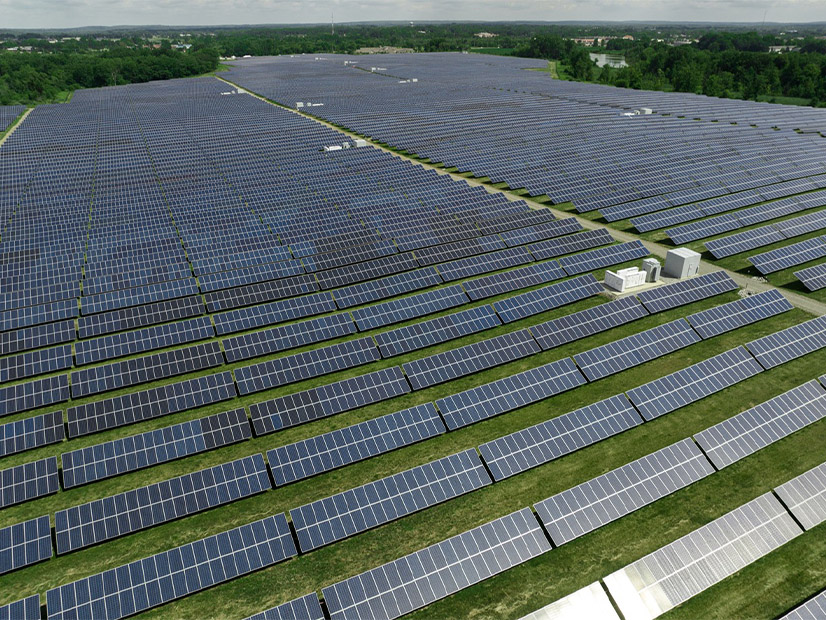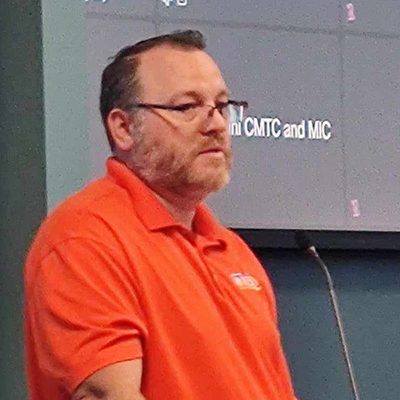CARMEL, Ind. — MISO is proposing an approximate 73-GW annual limit on project proposals, tripled entry fees, more ironclad land requirements and escalating penalty charges in its quest to oust speculative projects and lighten its gridlocked interconnection queue.
MISO shopped six new rules Wednesday to limit the interconnection requests it will accept and under what circumstances developers can withdraw project proposals. (See MISO Committed to Crackdown on Interconnection Queue Submittals, Departures.) The package of rules includes introducing an escalating, automatic penalty upon withdrawal of project proposals, imposing a 60%-of-peak-annual-load megawatt limit on the total number of new requests per year and enacting a 10% cap of that total size limit on the projects individual developers can submit annually.
“We do not want to slow the energy transition down, but the more projects you have in your queue, the longer it takes to study them,” Director of Resource Utilization Andy Witmeier said at a July 19 Planning Advisory Committee (PAC) meeting.
Witmeier said MISO considers a queue that adds 73 GW of annual projects more achievable in terms of reliability studies. Last year, MISO received about 171 GW of interconnection applications. As of last month, MISO’s interconnection queue contained 1,412 active generation projects totaling almost 241 GW. Historically, more than 70% of interconnection requests never complete MISO’s queue.
MISO is waiting to file for and receive FERC approval on the proposal before it closes its currently open-ended 2023 queue application window. It hopes to wrap up accepting applications by the end of the year, later than its usual September deadline. Witmeier said if MISO kicks off studies before it has the new restrictions in place, it could be hit with as much as 200 GW in new generator interconnection requests.
“MISO only has an approximate 121-GW peak load. Where are we going to put those additional megawatts? We’ll have to shove them off on our neighbors. We have to set some type of limit so we can get a proper-sized queue and have realistic studies,” he said.
But Witmeier said he had “concerns that FERC isn’t going to go for” MISO’s proposed cap on individual developers because of the potential for discriminatory treatment. MISO proposed an annual cap of 60% of its average 121-GW peak load (73 GW) and that individual developers be limited to 10% of the total, or 7,300 MW. Witmeier said MISO likely will have to create an attestation form for developers where they verify parent companies or subsidiary status to enforce such a cap.
Invenergy’s Sophia Dossin said her company is “deeply concerned” over the proposed megawatt limits, saying it would set the stage for a lottery where the most prepared developers’ projects could be barred from consideration. Others agreed that MISO’s megawatt limits could affect the market forces of renewable energy development.
Witmeier said MISO likely will hike its $4,000/MW first milestone fee to $12,000/MW. The second milestone fee is set to be $1,000/MW or 20% of the cost of identified network upgrades, whichever is greater. The third milestone fee would be at least $1,000/MW or 30% of network upgrades.
“We think the [Inflation Reduction Act] has changed the dynamics of our interconnection queue,” Witmeier said, adding that MISO hasn’t increased the milestone fees it charges developers since 2017.
MISO is proposing to use its larger, second milestone fee as the basis for a new, automatic penalty schedule for interconnection customers who withdraw projects. MISO is proposing to keep 10% of the first milestone payment if projects are removed before the start of the queue’s definitive planning phase, 25% of the payment if projects drop out at the queue’s first decision point, 50% at the second decision point, 75% during the queue’s final phase and 100% at generator interconnection agreements (GIAs) and beyond.
Witmeier said the penalty schedule relies on an expanded definition of withdrawn projects’ harm on lower-queued projects. He said MISO will use the pool of money it collects to spread among other generation projects, some of which were banking on sharing network upgrade costs with the dropouts. He said the move should cut down on the instances of cascading project withdrawals in the queue.
Witmeier also said MISO will require interconnection customers to secure 50% site control from generator site to point of interconnection upon application and 100% site control to the point of interconnection before developers can negotiate GIAs.
“If you don’t have site control at the time of GIA, you are not a viable project,” he said.
Witmeier said the megawatt limit on individual developers might only serve as a “backstop” against an unmanageably large queue because MISO is creating a more exclusive club of projects that line up in the first place through higher fees and stricter land requirements.
MISO retained Charles River Associates to conduct an independent review of the RTO’s recommendations, Witmeier said. He said while the review is still ongoing, the firm has initially deemed the set of rules to be reasonable.
However, Witmeier said if stakeholders are adamantly opposed to one of the new rules, MISO will consider lowering dollar amounts or adjusting requirements.
“We don’t know how each of these levers will impact the queue. There’s no way to know. Interconnection customers aren’t Goldilocks,” Witmeier said in response to stakeholders’ questions on how the queue might look emerging from the changes.
Staff will again discuss the stricter queue entry and exit rules at the Aug. 30 PAC meeting. Also, MISO has said it will consider stakeholders’ ask for a special meeting on the suite of changes. Many said the 45-minute time slot MISO allotted on its July 19 PAC agenda for discussion of the proposal was insufficient. PAC leadership was forced to stop accepting stakeholders’ questions to MISO staff after the discussion exceeded two hours.




